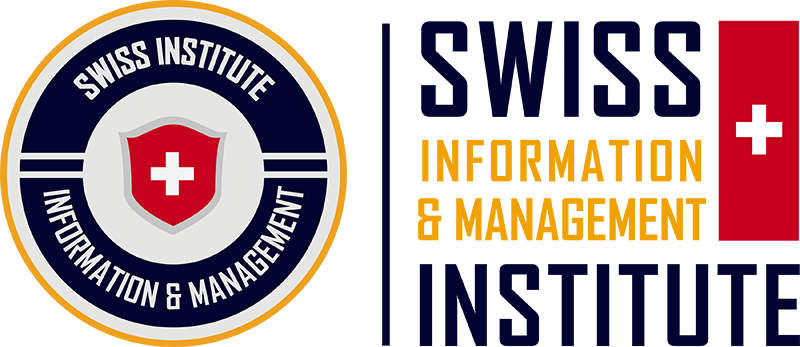A Brief History Of Swiss Flag That All Expats And Students Should Know

Once you have decided to study in Switzerland, understanding the history, culture, and people here are highly encouraged. All countries’ symbols, national anthems, flags, etc associated with their own histories. These are the things that all countries and their people have in their hearts, to define who they are today. The national flag is a unique symbol for each country, it was carefully designed and chosen at a pivotal moment in history.
Each flag represents a journey, from when it was a just thought till the moment it is the official symbol of one country. The Swiss flag has also had a tumultuous journey through civilized history. It represents all the fight that the Swiss had undergone to achieve independence and peace!
Let’s go back in time with The Swiss Institute of Management and Innovation (SIMI) to see and understand what makes this flag so special to the people of Switzerland and the world, how it was born, what it represents, and how it is seen today.
The brief history
Like any country that has experienced stages of civilization, Switzerland has its own complex history.
Let’s have a look together at some of the historical moments that made the Swiss flag as it is today.
Early 12th – 14th century
During this time, Switzerland was divided into provinces, often known as cantons. Each canton was self-governing and had its own flag and coat of arms. The cantons, however, were all part of the Holy Roman Empire.
This is important as most historians agree that this is where and when the present flag was originated. The Holy Roman Empire had the authority to grant its subjects the right to use a particular symbol in battle. Along with their initial red banner, the Emperor authorized the canton of Schwyz to function in the form of a white cross, which was deemed the “weapon” of Christ. As a result, the red banner with the white cross is today’s flag design.
The name of the state of Schwyz is also the root of the current country’s name, which is an intriguing fact (Switzerland)!
Former Swiss Confederation
Many times throughout history, the creation of this federation has been mentioned; however, the most accurately anticipated founding year is 1291. Uri, Schwyz, and Unterwalden were the only cantons that were originally part of the confederacy. Although they operated under distinct insignia, these cantons worked together as a unit.
In the years that followed, the confederation grew to include eight cantons, then thirteen, and finally twenty-six. Switzerland retains its 26 cantons to this day. After the Battle of Laupen, the Confederacy’s founding was significant because it became associated with the symbolism of the flag.
Battle of Laupen
The former Swiss Confederacy joined the canton of Bern in 1339 to oppose the Habsburgs in the Battle of Laupen, which is still remembered today. The Confederacy and Bern were victors, and the canton of Bern quickly joined the Confederacy.
It was difficult to differentiate foes from allies in battle because the cantons still used their own coats of arms and flags. The origins of the logo can be found in a variety of places. The most reliable report is that the alliance’s soldiers embroidered the white cross insignia into their uniforms. The warriors were able to recognize their own partnership in this way.
Helvetic Republic
Unfortunately, the white and red flags have not always been present throughout history. The flag chosen by the states was abolished in 1798. This was due to the fact that Napoleon and the French army marched into Switzerland and destroyed the independent system of cantons and its symbols. To show that Switzerland was under French rule, Napoleon established a tricolor flag and coat of arms. However, after the Helvetic Republic dissolved, this flag was no longer used.
The official Switzerland logo
After many years without a unifying flag, the country finally agreed to include it in its constitution in 1848. It was then designated as Switzerland’s national flag. As previously stated, the flag’s primary colors are white and red. The white cross in the flag’s center is divided into equal parts. They are one-sixth the length of the width.
However, the origin of the red hue utilized in the flag is still a point of contention. Some say it represents Christ’s blood, while others believe it represents the hue of the old Bernese flag.
The Swiss flag is distinctive in that it is square in shape, unlike most other flags in the world, which are rectangular. There are only two square flags in the world, and this is one of them. During events such as the Olympics, however, Swiss officials wave a rectangular flag to imitate the flags of other countries.
Red Cross
Henry Dunant, a Swiss, founded the Red Cross in Geneva in 1863. An inverted version of the Swiss flag is presented as a symbol. A red cross will be placed on a white banner in the Red Cross flag. Despite this, due to their resemblance, these symbols are frequently misunderstood. The easiest approach to remember is to use the name’s suggestion, “red cross,” which specifies the symbol’s hue.
Swiss Flag vs Red Cross
Many people confuse the Swiss flag’s insignia with that of the Red Cross, a humanitarian organization. It’s no coincidence that they came from the same country. There is, however, a distinction between these two flags. The Red Cross flag is the polar opposite of the Swiss flag, which has a white cross in the center of a red field. The cross is red, with a white background.
A symbol of peace
Switzerland has not participated in any armed conflicts in a long time. Throughout fact, in the last 500 years, Switzerland has not been involved in any conflicts. Switzerland declared neutrality in 1815, promising to remain neutral in any future violent war between cantons. Switzerland’s self-imposed neutrality was officially acknowledged by the League of Nations in 1920. Switzerland and its flag have so become symbols of peace, security, and equality for all people on the planet.
Protected by law
Swiss law safeguards the Swiss flag. Depending on the infraction, using the flag for commercial or personal purposes can result in penalties or even jail time.
The flag of a country reflects a vital aspect of that country’s history and people, therefore it’s no wonder that the Swiss flag has been heavily safeguarded after such a long and significant history. Now that you’ve traveled through time, we’re confident you’ll understand the significance of the flag when you visit Switzerland, be able to tell the difference between the Swiss flag and the Red Cross and be able to wow your friends with your knowledge of the Swiss flag!
Source: The Swiss Institute of Management and Innovation
